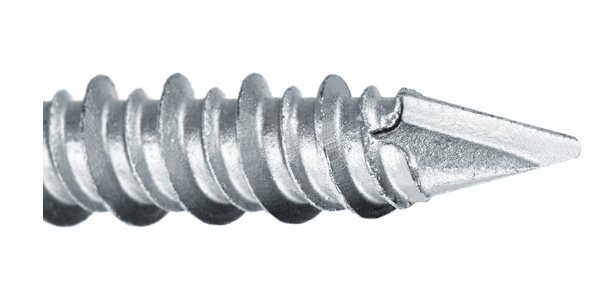The Best Fibre Cement Screws
What are the best fibre cement sheet screws to use?
There's a lot of confusion out there in which type of screw should you be using to fix your fibre cement sheeting or cladding boards.
Screwing off cement sheeting is a difficult process, cement sheeting is hard, abrasive and unforgiving on your fasteners.
It's also usually a semi-finished product, screws causing excessive burring can burn time by the builders and contractors having to sand these back and fill them, adding additional costs.
With the ever growing prevalence of cement sheeting we thought its time to clear up what features you should be looking for in a fibre cement screw
The self drilling point
You don't want to spend an excessive amount of time having to pre-drill every single hole, especially if you've got thousands to install.
You're going to need a specific fibre cement self drilling point.
We always recomend unless screwing into steel framing thicker than 1.2mm (which is pretty uncommon) that you should be using a specific fibre cement self drilling tip.
Fibre cement tips are quite different from normal self drilling timber or metal tips.
They will drill into soft wood and hardwood timbers with ease, any steel frames up to 1.2mm but the real advantage comes in the points ability to carve through fibre cement sheeting.

As you can see in the image above the tip is quite different, rather than aggressively trying to drill the fibre cement sheet like a metal drill point or type 17 point would do, these fibre cement drill points carve through the fibre cement with almost a scoop like motion.
This prevents the tip from becoming blunt half way through the sheeting and then under performing when it comes to drill into the timber or steel stud.
An issue im sure many of you who've used metal drill points before are aware of.
The self countersinking head
Now this part is very important. Over the years we've seen all different types of 'self countersinking' heads in fibre cement screws, none of which seemed to work very well.
The classic ribbed head just doesn't seem to be aggressive enough and ends up burring the boards up so bad it's quicker to pre-drill them (the part of the task we're trying to get away from)
Some manufacturers use a super aggressive rib a bit like this one:
.jpg)
Again - we think it's not quite aggressive enough to cleanly carve the countersink into the board.
When screwing fibre cement, just as the head touches the board and trys to countersink your going to feel a lot of resistance. This is putting alot of torsion through the screw into your driver and also into the threads holding your screw into your timber or steel frame.
If the countersunk head isn't quite the right design or profile it can produce too much torsion when trying to countersink this can cause the thread or driver to slip.
When manufacturing these countersink types the ribs are punched from the head, leaving the cutting teeth blunt.
It will also cause alot of excess burring in the board.
The best type of head is a countersink design with actual cutting teeth, not ribs!
.jpg)
As you can see on the image above - this head type has actual cutting teeth on the underside of the head.
This head type and design means the teeth are not 'carved' from the head and therefore leaves the cutting edges significantly sharper than other manufacturing process's.
The sharpness of the cutting teeth is key to a great performing fibre cement screw. This reduces torsion on the thread and head during install and prevents any thread or drive slip.
After signifcant testing we believe this to be by far the best performing countersunk head type for screwing fibre cement sheeting.
Driver Type
Theres plenty of drive types out there and depending on your location some will be more popular and more available than others.
For instance Phillips Drive is very popular in both USA and Australia but fairly non-existent in european countries due to Torx drives popularity.
For this reason we won't go into too much detail on driver types as they're not going to be available for everything, essentially whichever type is available will have to do!
Non-slip drives such as square drive or torx drive are going to perform significantly better than say phillips drive, due to the amount of torsion required. Again though just go with whichever type you can get a hold of, drill points and type of countersink are going to be much more important!
.jpg)
We stock a range of fibre cement screws with all the features mentioned in this article here: Fibre Cement Screws
Thanks for reading our latest blog entry
Best Regards,
The Scrooz Fasteners Team

.jpg)